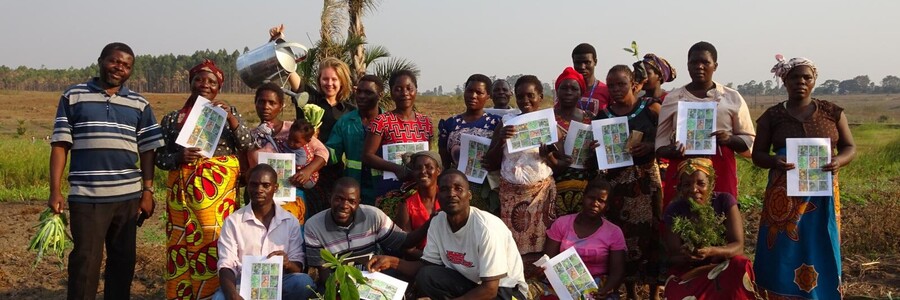Project location
The families' fields were located around the Nantipwili River Valley in southern Malawi. Here, there are still small forest remnants. Our local partner is Renew'N'Able Malawi. Together, we wanted to take a first step with this project to better protect the small remnants of forest. Dynamic agroforestry is ideal for this, because the method specifically uses a variety of local trees and bushes and combines them with arable crops. Done correctly, this combination quickly leads to increased yields and thus helps poor smallholder families to ensure their survival - while reforesting at the same time. Thanks to Dynamic Agroforestry, the 20 families were able to plant their gardens with numerous trees in the first phase of the project and harvest abundant vegetables and fruit over the following months. More and more curious people came and asked what was special about the method and wanted to join in.
Second project phase works with five villages
Therefore, we are now starting the second phase. First, we selected five villages located around the Nantipwili river valley and its tributaries. The villages of Khombaniwa, Machemba and Bernard are located directly in the Nantipwili River Valley. Khombaniwa also directly borders the village of Sumbuleta, where the majority of the first group from 2017 lives. Since the first group is also participating in the second phase, we are combining these two villages into one. The other two villages are Chiwaya and William, both on a tributary.
Communicating the important function of trees
The first four workshops took place in October and November 2018. In the shade of a tree, the principles of the new cultivation method were explained and the function of trees in a planting system as well as forms of irrigation were taught in theory and practice. The families from the first groups also participated this time and were able to contribute a lot from their experiences. Especially the exchange between the women farmers helps a lot to teach a new method. The regular meetings also met with great approval from everyone, as they were able to exchange ideas with each other, the teachers were able to address questions and obstacles, and they were able to convey the new approach to farming with a large variety and with trees.
Help us also to save nature in the Valley of the Bast Palms!

